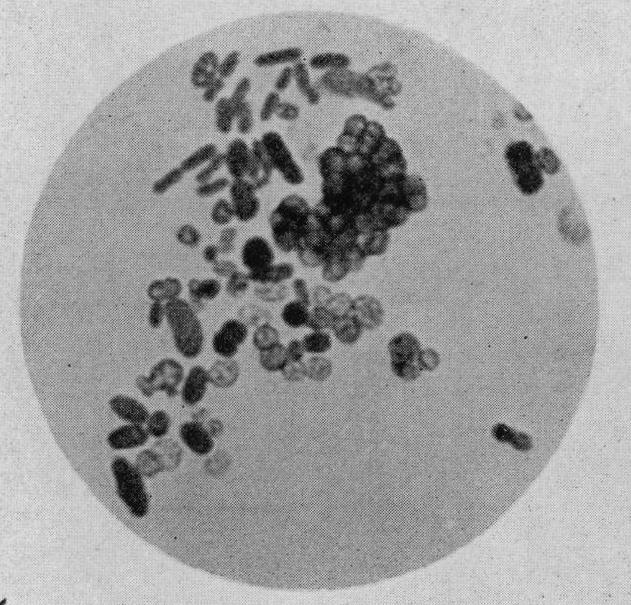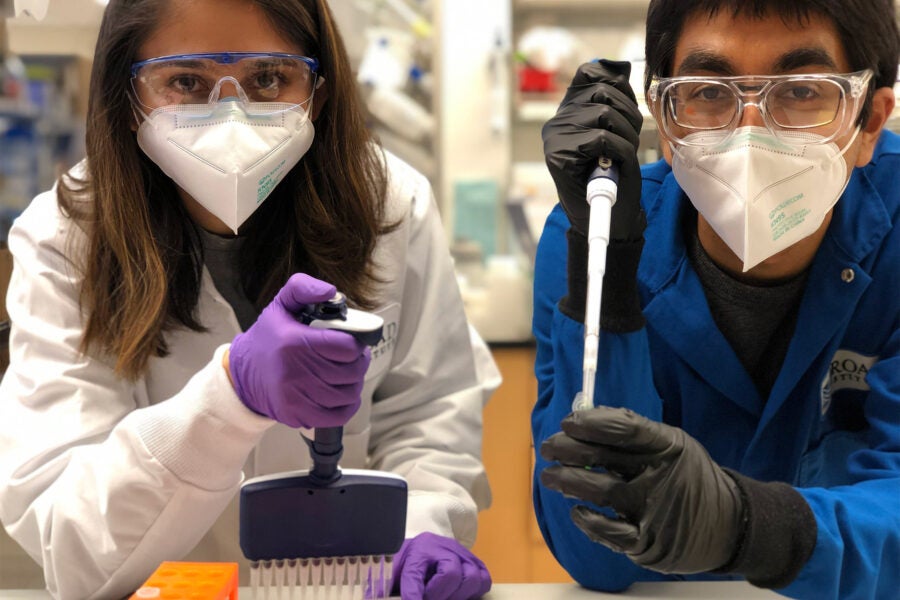
Azotobacter vinelandii via Wikipedia
Researchers from Washington State University have engineered strains of the ubiquitous, nitrogen-fixing soil bacterium Azotobacter vinelandii to produce ammonia and excrete it at high concentrations, transferring it into crop plants in lieu of conventional chemical fertilizers.
“We presented conclusive evidence that ammonia released is transferred to the rice plants,” said Florence Mus, Ph.D., assistant research professor, Institute of Biological Chemistry, Washington State University. “Our unique approach aims to provide new solutions to the challenge of replacing industrial fertilizers with custom-made bacteria.”
In other words, this approach could mitigate a major source of environmental pollution. The research is published in Applied and Environmental Microbiology, a journal of the American Society for Microbiology.
The investigators used gene editing techniques to engineer A.vinlandii to produce ammonia at a constant level, regardless of environmental conditions surrounding the bacteria, and to excrete it at concentrations high enough to effectively fertilize crops.
The use of gene editing techniques in lieu of inserting transgenes into the A.vinlandii genome allowed regulatory requirements to be avoided that would have made the development process slower, and more difficult and expensive.
The scientific motivation for the research was an interest in better understanding nitrogen fixation—that is, the chemical processes by which atmospheric nitrogen is assimilated into organic compounds as part of the nitrogen cycle. “Our work helps provide a more complete, fundamental understanding of the factors that underpin gene expression in a model nitrogen fixing microorganism and defines the biochemistry that brings about ammonia excretion in A.vinelandii,” said Mus.
The practical motivation for the research was to reduce the major water pollution problems that arise when excess nitrogen fertilizer gets washed into waterways. This causes algal blooms that deplete oxygen and kill off fish and other aquatic life, creating “dead zones” in lakes, rivers and expanses of ocean. The dead zone in the northern Gulf of Mexico encompasses nearly 6,400 square miles.
To this end, the investigators are designing the bacteria to produce ammonia at a steady rate. But they expect to be able to design different groups of A.vinlandii to produce ammonia at different rates to fit the needs of different species of crop plants. This would allow all the ammonia produced to be used by the plants, rather than ending up washed into waterways.
“Successful widespread adoption of these biofertilizers for farming would reduce pollution, provide sustainable ways of managing the nitrogen cycle in soil, lower production costs and increase profit margins for farmers and enhance sustainable food production by improving soil fertility,” said Mus.
Original Article: Engineered Bacterial Strains Could Fertilize Crops, Reduce Waterways Pollution
More from: Washington State University
The Latest Updates from Bing News & Google News
Go deeper with Bing News on:
Replacing industrial fertilizers with custom-made bacteria
- Feed has no items.
Go deeper with Google Headlines on:
Replacing industrial fertilizers with custom-made bacteria
[google_news title=”” keyword=”replacing industrial fertilizers with custom-made bacteria” num_posts=”5″ blurb_length=”0″ show_thumb=”left”]
Go deeper with Bing News on:
Custom-made bacteria
- Exploring gel formation mechanisms and the role of lactic acid bacteria in fermented sausage
A research team has reviewed the process of gel formation in fermented sausages, emphasizing the crucial role of myofibrillar proteins and the influence of lactic acid bacteria, temperature, and ...
- Bacteria Engineered for Climate-Neutral Chemicals of the Future
Microbes are a kind of production platform into which biosynthesis modules can be inserted according to the “plug-and-play” principle.
- Engineered Bacteria: A Climate-Neutral Solution for Chemical Production
Researchers transform bacteria to produce chemicals from renewable methanol, reducing reliance on fossil fuels ...
- This company just bioengineered a plant-bacteria combo to clean air better than an air purifier
That’s common knowledge, but given the amount of pollutants we produce, both outdoors and in our homes, plant life can only do so much to clean our air. However, the bioengineering firm Neoplants has ...
- Bacteria for climate-neutral chemicals of the future
Researchers at ETH Zurich have engineered bacteria in the laboratory to efficiently use methanol. The metabolism of these bacteria can now be tapped into to produce valuable products currently made by ...
Go deeper with Google Headlines on:
Custom-made bacteria
[google_news title=”” keyword=”custom-made bacteria” num_posts=”5″ blurb_length=”0″ show_thumb=”left”]









